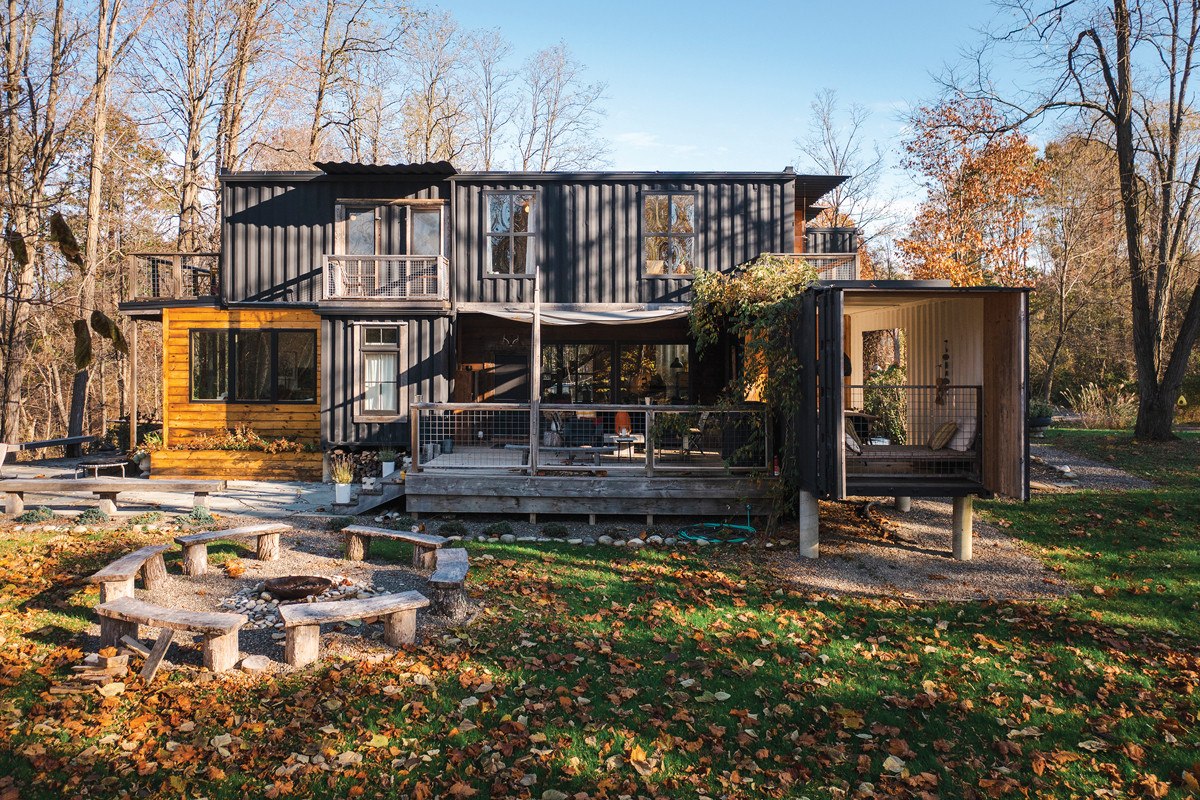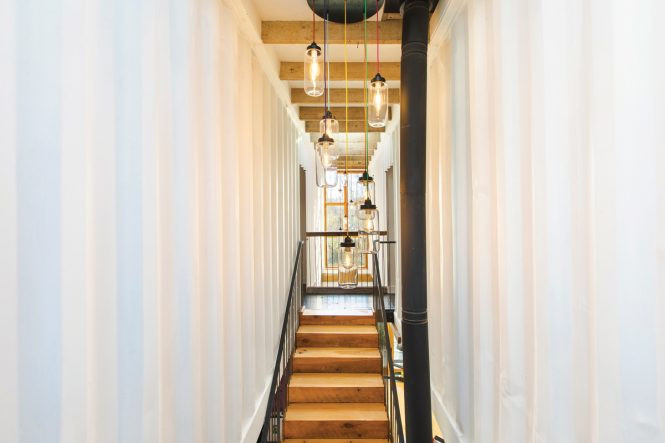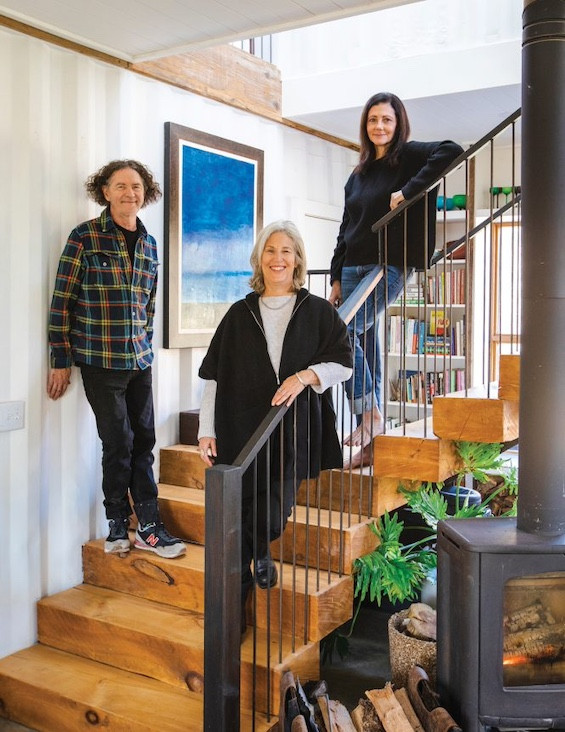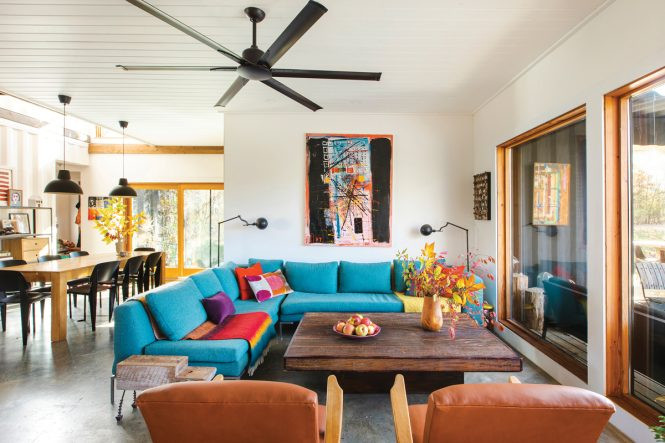Super Recycling: Arnaud Cornillon’s Container House In Tivoli
The designer manifested the vision of his dream home using seven 40-foot shipping containers.

The designer manifested the vision of his dream home using seven 40-foot shipping containers.
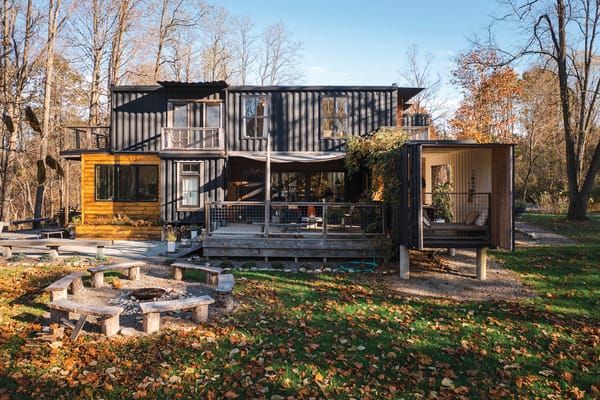
Photos by Nils Schlebusch
While sleeping in a tepee on his 10-acre Tivoli plot, Arnaud Cornillon dreamt of the home he would one day build there. It was an ambitious plan, incorporating seven 40-foot shipping containers and an additional 20-foot container. His design took cues from the lay of the land and the slant of the sun. Observing the changing light and seasons helped orient his home.
“One time I put the entrance of the teepee in the north and there was a cone of ice following the shadow of the teepee,” says Cornillon. “So an entrance in the north was a big no-no, because the house would give a shadow and there would be ice in the back. I moved the entrance to the east.”
That attention to natural details is evident in the finished home. The galley kitchen faces east because Cornillon enjoys making his morning coffee in a room flooded with light, while the home’s living room faces southwest, a location that makes the most of the sunset’s golden hour.
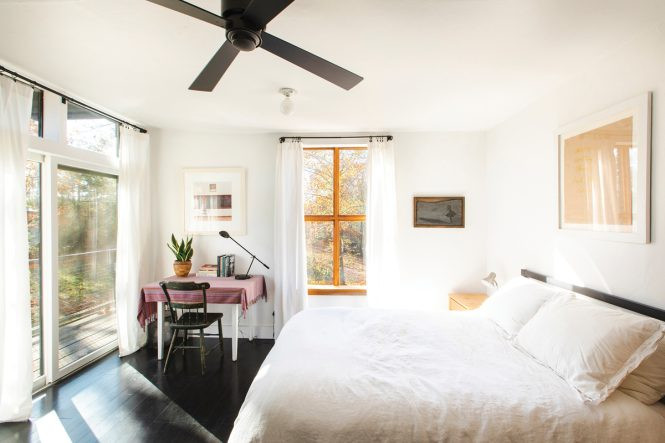
Cornillon positioned the rooms to face the best light at different times of the day.
It took Cornillon six years to build the house. He’s not an architect, nor did he start with endless funds to complete his ambitious project. Having worked for almost 30 years as a decorative painter, Cornillon more than once ran out of money during construction. He also faced multiple major health issues that threatened to derail his project. Nor was it easy to get a loan on a container house, despite their growing popularity.
None of those obstacles permanently hindered Cornillon. He likes solving puzzles and, for him, building the house was an exercise in creativity. His artistic approach to tackling projects was nurtured during his childhood in France, growing up with an artist mother and an architect/artist father who was fond of Le Corbusier and African art. “I grew up watching my father solve house problems, so that’s how I see the world,” he says. “I think everybody is capable of designing their whole house, given that maybe it’s a little bit more modest than this one. I feel as a designer that I can design a car or a dish or a tray. It’s just a language that I’ve learned. And just like every writer or artist, you learn that language over the years.”
Cornillon had some art school experience with architectural drawing and he taught himself to use a 3-D architectural modeling program to expertly position the house. He did much of the physical work himself, but enlisted the services of an engineer and always hired professional plumbers and electricians. “If you make a mistake there, it’s just not worth the money,” says Cornillon. “But the rest we eventually figured out. The problem with shipping container houses was that there was no how-to [manual].”
Space Between
The house mostly consists of containers, now painted a soft black, but the home also features a balcony and entrance sections clad in wood. Vines on a trellis soften the home’s entrance and a playful wooden plank leads to the deck. Cornillon initially worried that the white interiors of the shipping containers would look cold and perhaps too “brutally industrial,” but the corrugated material surprised him by looking almost like a curtain. Light ripples across the undulating metal walls and, as shadows travel across the room, provides the illusion of texture. The home’s most distinctive feature. — and also his favorite — is the sculptural living room staircase, composed of a steel frame with thick chunks of hemlock wood on either side. It rises into a gap in the assembled containers,
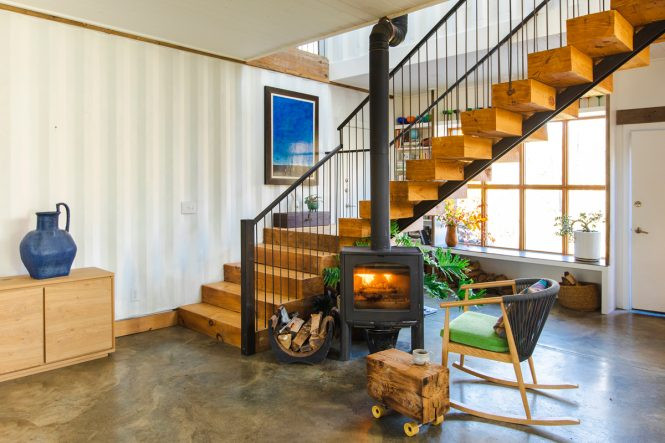
“It was actually two columns that I bought for $60 at a garage sale and my neighbor welded them together,” says Cornillon. “We went to the mill and they charge you per cut on custom wood. This was extremely cheap. It was like a block —12-inches-by-eight-feet long — and we cut them down on site here to almost four feet and that was it. I was able to do it without knowing too much.”
He initially planned for the staircase to ascend through the floor of an upper level container but the metal floor was too difficult to cut, so he separated the containers with an extension, creating a skylight that lets sun and starlight wash the space below.
When you walk around at night, it’s so incredible to have the moon inundate the house with light,” says Cornillon. “And so it became a feature that I appreciate very much. Instead of cutting through the container, I just made the space between them.”
A Well-Traveled Home
In colder weather, the home is heated by a wood-burning fireplace plus radiant heating under the polished concrete floors. The expansive terrace becomes an extra room in warm weather, an outdoor entertaining space with sunset views. A fire pit with circular stone seating is also positioned to enjoy the evening view, while an open-ended shipping container serves as an outdoor dining space. In Cornillon’s childhood home, entertaining often involved dining outdoors. “We always had large terraces where most of the dinner would happen”
In addition to the design possibilities, Cornillon was drawn to the romance of shipping containers. “It’s probably the only house that has been to China and back a couple of times,” says Cornillon, who moved from Nice to New York City, then California and, eventually, the Hudson Valley. “The containers were 10 years old when I bought them. So they’ve traveled. There was some Arabic, there’s Korean, we found all kinds of writing in them. It’s kind of funny to think your house has been everywhere.”

The house is constructed from seven 40-foot shipping containers and an additional 20-foot container.
Four years ago, after living in his dream home for four years, Cornillon sold the house to Lori Greenberg. He’s happy to see that she’s put the space to good use, holding community events, hosting weddings, and giving concerts at his former on-site shipping container studio, which now serves as an informal stage. “Lori has brought together a community, especially of women and artists and writers, creating all kinds of energy within this house, and I’m very proud of that because that’s the playful feeling I wanted to capture in the house.”
After building his dream home Cornillon employed his hard-won container skills to found Acorn Studio in Hudson, selling shipping containers suitable for an office, writer’s retreat, artist or recording studio. The containers feature a single metal window and a sliding glass door. A heart attack forced Cornillon to temporarily suspend that business, but now he’s ready to design and sell more container minis. Would he ever design another house or more mini containers? Definitely, although he might not want to physically build one. He’s up for the creative challenge.
